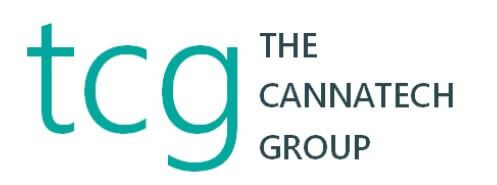The cannabis industry is moving at a quick pace, from states on boarding, to regulations changing and everything in between. The entire vertical is continually evolving and changing. With all of these changes, MSPs face challenges and curve balls daily. These curve balls are due to dealing with different sates, a lot of different compliance issues, different schedules, and of course different standard. Jim Remke joins the 420MSP to share some of his recent tails from the trenches.
Video Transcription
Harry Brelsford 0:03 A 420 MSP back with Jim Remke out of Chicago, how you doing him?
Jim Remke 0:08 Doing good. Thanks, Harry, how you doing?
Harry Brelsford 0:10 Good, good. Well, you know, needless to say, the industry’s quite frankly, moving faster than I even expected that and we’ve had that talk with some other analysts. But let’s step back a second, we, you know, we can always talk about growth and this and that. But give me some real world updates. What are you seeing out there? You’re out there doing it?
Jim Remke 0:32 Well, yeah, we’ve been fortunate enough to get involved with some partners, and some groups are, you know, giving us some good experience here. You know, not just not not not necessarily here, meaning Illinois, but in other states. So we’re working all over the country. And basically, you know, we’ve been helping out not only with hardware, and all the, you know, staging and configuring, and then, you know, deploying and that kind of stuff, but also going on site to do site surveys, and also doing installations. And, you know, it’s it’s been a really interesting experience. And it’s been a really different experience from some of the other retail verticals in the sense that it really seems to be kind of, we call them fire drills, sometimes, you know, it’s like, well, it’s it just is what it is sometimes, and I think a lot of what’s happening is, there’s a big rush that happens, because it’s so much about being ready when when the state whatever state it is, says, Hey, we’re coming to check your facility and make sure you’re ready. And I don’t know that they’re getting much notice. But it doesn’t mean we can’t plan ahead for these things. So like at the site survey, we’ll go there, we’ll see things like, Oh, sure, the network cable is in but it’s not run. And, you know, a electric, you know, everything’s, you know, sketched in kind of like that, you know, so nothing’s to the endpoints, nothing’s dropped, you know, there’s nothing that’s been kind of, you know, nice and neatly finished off, and then we go, Okay, well, here’s what you need to do when we come back for the install. And then all of a sudden, it’ll be, you know, a few weeks later, Alright, we’re ready. And we need it done. Because the inspectors coming in next week, and then we send a tech, they’re assuming that they’re going to have all these things ready. And sure enough, we have problems where, you know, not necessarily exactly ready for installation, there’s still a lot of labors involved inside, you know, finishing things up. So you’re looking at, you know, maybe the network, there’s only one network drop instead of two. So you’re having to, you know, pivot on the fly and figure out well, okay, how am I hooking up everything. And then in the meantime, you got, you know, dust and, and debris falling everywhere from the fifth, you know, the Finish Carpentry going on and stuff, and it’s just a mad scramble to get everything done. So, you we do, what we can and we’re really trying to do is, is get the people we’re working with, to set expectations and to try to get out ahead of these things. So that so that people know that we what we really need when we go in there, and how this is going to run smoothly. And it’s not just gonna be a knee jerk fire drill kind of thing. So it’s been interesting, to say the least. So yeah,
Harry Brelsford 3:05 yeah, the good old Tales from the trenches, you know, it’s, it’s, it’s akin to listening to, and it’s akin to the early days of local area networking, right. And you had manual settings on the network adapter cards and stuff. And it now it’s all automatic, you know, today, just to show you the maturity continuum, today, like my son wouldn’t really know or care what TCP IP is the protocol, right? versus, in my day, he had to take a certification exam on it, but now it’s all automatic.
Jim Remke 3:42 Yeah, and I mean, God bless you for knowing that because I shared on that’s a different language. Me too. But you know, these techs go right on site. And, you know, we give them the scope of work, and it’s supposed to be pretty cut and dry. But there’s, you know, there’s always that curveball coming at you, it seems like, no matter what, but especially in this vertical, because we’re dealing with a lot of different states, a lot of different compliance issues, a lot of different schedules, you know, every every state’s kind of different so the standardization is something that we’re still far away from, but we’re hoping to try to influence a little bit from like a, you know, from a lifecycle perspective of buying hardware, and then when you’re going to get it in there and all the steps in between. So,
Harry Brelsford 4:21 well, I’ll end on this because in 20 years, these make great stories, right, when you can go man, do you remember the day when we walk in and it was dusty and, you know, cables were hanging in and because it is it is going to grow up? Right, and I’ll end sort of as I began, it’s growing up much faster than I thought it would with some of the new states coming online and hey, next month, Jim, if you don’t mind speaking of states, let’s double click into what’s what’s going on in Illinois. You know, see smooth news, so alright, but real
Jim Remke 4:54 stagnant and kind of caught up in the courts with some of the new licenses but you know, there’s all Some progress and I’ll be sure I’d love to come back on and kind of give you some some updates there.
Harry Brelsford 5:04 All right, my friend. Okay. Take care. Thanks. Have a good one.








